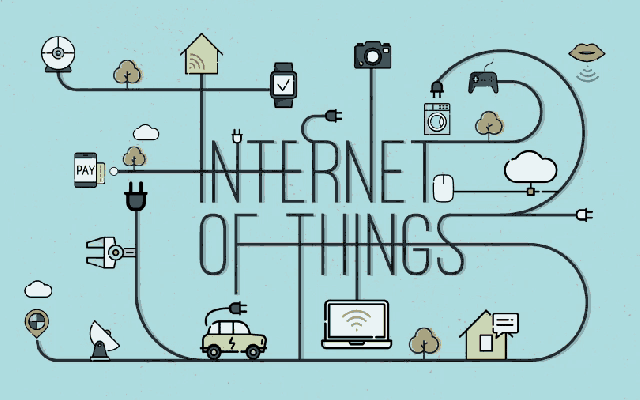The Internet of Things (IoT)
 Aditya Marathe
Aditya Marathe
There are endless ways to describe or define IoT. Here are some:
The standard definition says that the Internet of Things (IoT) is somehow a leading path to a smart world with ubiquitous computing and networking.
For our better understanding, let’s make it simple. IoT is the combination of the Internet and things; before that, what is the Internet?
The Internet is a network of networks.
What are things? Things are nothing but objects, like sensors, actuators, cameras, etc.
Also, we can describe IoT as Physical objects with sensors and actuators that communicate with computing systems via wired or wireless networks.
In this new era of Technology, the Internet of Things has become a part of our day-to-day lives. We use IoT every day, but we don’t know that this is an IoT-enabled device. These devices include smartphones, smart watches, Amazon Alexa, and many more.
For better understanding, we must know the history of that thing! Am I correct? So,
The first internet-connected device, a Coke machine at Carnegie Mellon University, was connected to the internet in the early 1980s, beginning the history of the Internet of Things (IoT). However, British tech pioneer Kevin Ashton, who was working with Procter & Gamble at the time, didn't come up with the term "Internet of Things" until 1999.
With the introduction of technologies like RFID (Radio Frequency Identification) and wireless sensor networks in the early 2000s, the IoT started to take off. These technologies make it feasible to link devices and things to the internet and collect data from them.
The growth of IoT accelerated in the mid-2000s with the increasing popularity of smartphones and other mobile devices. These gadgets opened the way for the creation of linked devices and apps by allowing users to access the internet at any time and from any location. With billions of devices currently connected to the internet and producing enormous quantities of data each day, the IoT sector is currently experiencing rapid growth. Numerous industries, including healthcare, manufacturing, transportation, and energy, employ the technology.
IoT devices may be used for a variety of things, including smart city infrastructure, industrial control systems, and home automation. They are intended to improve our lives by automating chores, enhancing safety and security, and offering real-time insights into complicated systems.
One of the primary benefits of the IoT is its capacity to gather and analyse data in real-time from different sources. This can help organisations make better decisions, enhance efficiency, and cut expenses. IoT-enabled sensors, for example, may monitor a building's temperature, humidity, and air quality and automatically alter the heating, ventilation, and air conditioning systems to maintain ideal conditions.
However, with the benefits come difficulties. Risks can have major impacts, especially in critical infrastructure or medical settings where IoT devices are open to attacks. Additionally, the enormous number of devices and the data they produce might be difficult to manage, requiring a lot of processing power and storage space.
A strong platform that enables a variety of devices, data formats, and protocols is necessary for the Internet of Things (IoT). Several of the main IoT platform technologies are shown below:
Cloud platforms
Edge computing platforms
IoT middleware
Device management platforms
Application enablement platforms
Communication protocols
The Internet of Things (IoT) is a large, multidisciplinary discipline that includes a variety of specialties. Here are some of the most important sub-branches of IoT:
Industrial IoT (IIoT)
Smart homes and buildings
Wearable technology
Smart cities
Agriculture IoT (AgriTech)
Healthcare IoT
So how can we use it, or who are the service providers of IoT?
In India, service providers are:
Tata Communications
HCL Technologies
Wipro
Tech Mahindra
Infosys
And around the world, service providers are
IBM
Microsoft
Cisco
Google Cloud
Huawei
These are some of the top IoT service providers that are generally suggested by IoT users.
To summarise, IoT is a fast-growing technology with the potential to change many parts of our lives. While it offers many benefits, some difficulties must be resolved to assure its safe and efficient usage. We can expect to see new and innovative IoT applications as technology grows, which will only improve our lives and the environment we live in.
Subscribe to my newsletter
Read articles from Aditya Marathe directly inside your inbox. Subscribe to the newsletter, and don't miss out.
Written by

Aditya Marathe
Aditya Marathe
Tech enthusiast with a passion for IoT, Cloud, and community building. Assistant System Engineer at TCS.